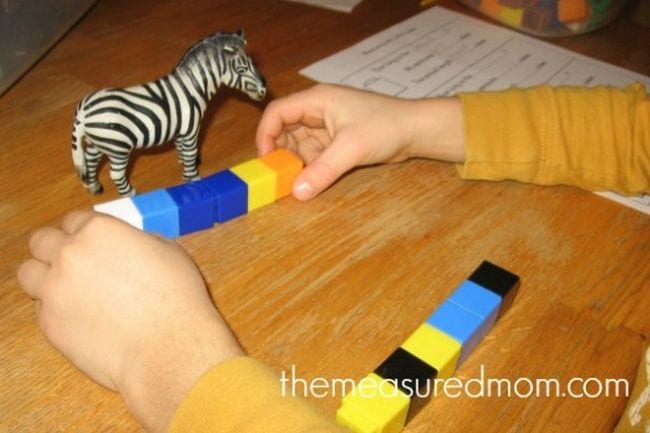Building blocks (e.g., Unifix cubes, LEGO bricks)
Various objects to measure (e.g., toy animals, pencils, books)
Paper and pencils for recording estimates and measurements
Introduction:
Explain the concept of estimation and its practical uses in everyday life, such as estimating the length of various objects.
Introduce the activity as a fun way to practice estimating the length of objects using building blocks.
Activity Setup:
Provide each student with a set of building blocks (Unifix cubes or LEGO bricks).
Show them a selection of objects they will estimate the length of, such as toy animals, pencils, and books.
Making Estimates:
Ask students to look at an object and estimate how many building blocks long they think it is.
Have each student write down their estimate on a piece of paper.
Measuring the Object:
Students will then use the building blocks to measure the actual length of the object.
Compare the actual measurement to their initial estimate.
Discussion:
Discuss the results as a class. Ask questions like:
How close were your estimates to the actual length?
What strategies did you use to make your estimate?
How did the size of the building blocks affect your estimate?
Reflection:
Reflect on the activity. Ask students:
What did you learn about making estimates?
What could you do next time to improve your estimate?
How does using different sizes of building blocks change your estimate?
Repeat with Variation:
Repeat the activity with different objects and building blocks to give students more practice and help them improve their estimation skills.
Extensions:
Use different types of building blocks (e.g., larger LEGO bricks, smaller connecting cubes) to challenge students to adapt their estimation strategies.
Incorporate group activities where students can discuss and share their estimation strategies and results.
Create a math center where students can independently practice their estimation skills with various objects and building blocks.
This activity helps students develop practical estimation skills and spatial reasoning in a fun and engaging way, enhancing their overall number sense and mathematical understanding.

